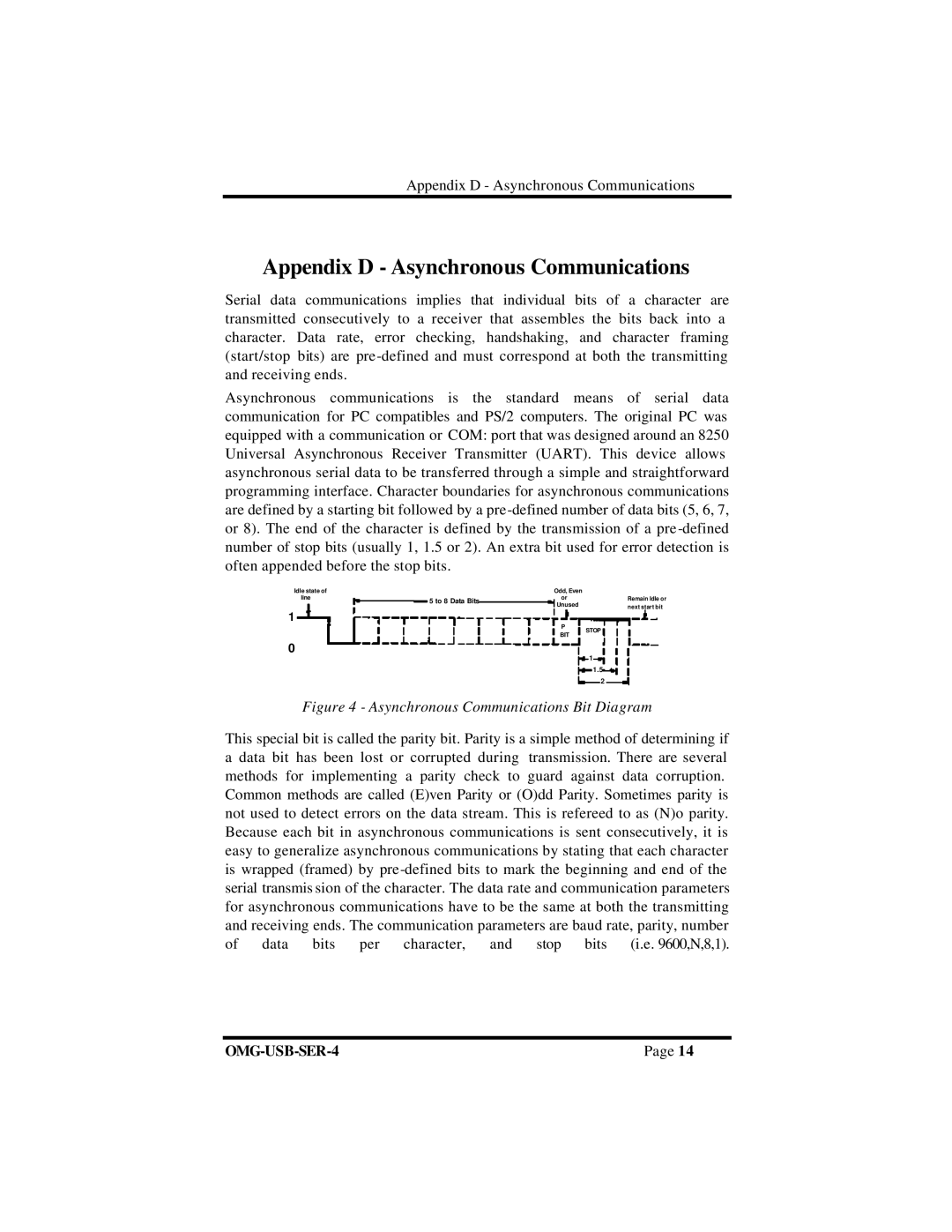Four Port RS-232/422/485 to USB Adaptor, OMG-USB-SER-4 specifications
The Omega OMG-USB-SER-4 is an advanced four-port RS-232/422/485 to USB adapter designed for seamless communication between legacy serial devices and modern computers. This versatile device caters to the growing need for increased connectivity, making it an ideal solution for industrial control, data acquisition, and other applications requiring multiple serial connections.One of the main features of the OMG-USB-SER-4 is its ability to accommodate various serial communication protocols, including RS-232, RS-422, and RS-485. This flexibility enables users to connect a wide array of devices such as sensors, PLCs, and data loggers without worrying about compatibility issues. Furthermore, the adapter supports full-duplex communication, making it possible to transmit and receive data simultaneously on each port, enhancing overall efficiency.
The OMG-USB-SER-4 is built with robust technology that ensures reliable performance and durability. It supports a data transfer rate of up to 921.6 Kbps, allowing for fast and efficient data handling. Additionally, with its plug-and-play functionality, the device can be easily integrated into existing systems without requiring complex configurations or additional drivers, facilitating a hassle-free installation process.
In terms of characteristics, the OMG-USB-SER-4 features LED indicators for power and activity status, providing users with real-time feedback on the operational state of the device. The unit also includes built-in surge protection, safeguarding connected devices from voltage spikes and electrical noise, which is crucial for maintaining system integrity in industrial settings.
The compact design of the OMG-USB-SER-4 further enhances its appeal, as it allows for easy deployment in space-constrained environments. The device is USB-powered, eliminating the need for an external power supply, making it convenient for mobile or temporary setups.
In conclusion, the Omega OMG-USB-SER-4 four-port RS-232/422/485 to USB adapter combines versatility, speed, and ease of use, making it an excellent choice for professionals looking to bridge the gap between legacy serial devices and modern computing systems. Its robust features, coupled with reliable technology, ensure that it meets the demands of various industrial applications while maintaining user-friendly operation.

